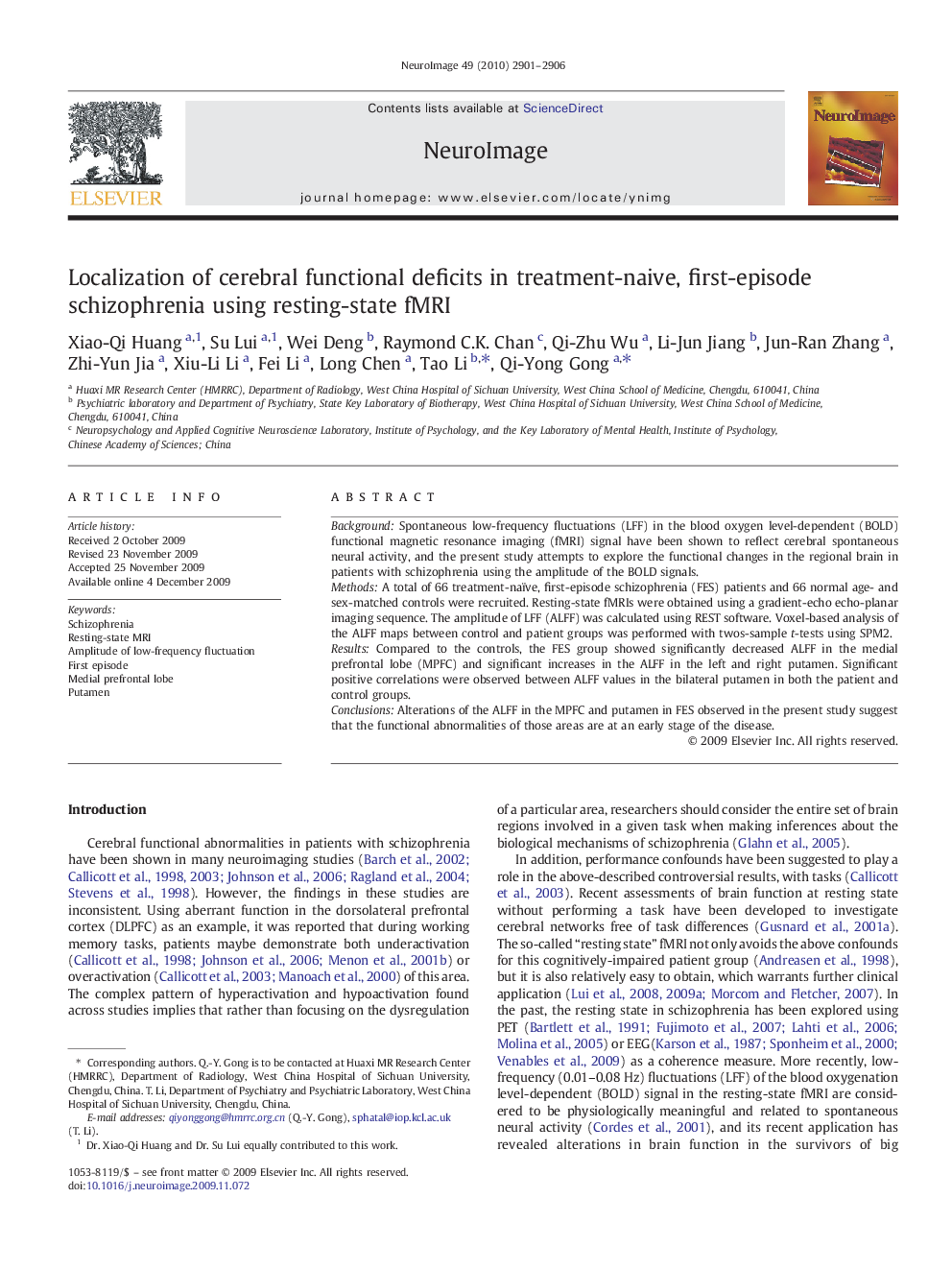| Article ID | Journal | Published Year | Pages | File Type |
|---|---|---|---|---|
| 6037367 | NeuroImage | 2010 | 6 Pages |
BackgroundSpontaneous low-frequency fluctuations (LFF) in the blood oxygen level-dependent (BOLD) functional magnetic resonance imaging (fMRI) signal have been shown to reflect cerebral spontaneous neural activity, and the present study attempts to explore the functional changes in the regional brain in patients with schizophrenia using the amplitude of the BOLD signals.MethodsA total of 66 treatment-naïve, first-episode schizophrenia (FES) patients and 66 normal age- and sex-matched controls were recruited. Resting-state fMRIs were obtained using a gradient-echo echo-planar imaging sequence. The amplitude of LFF (ALFF) was calculated using REST software. Voxel-based analysis of the ALFF maps between control and patient groups was performed with twos-sample t-tests using SPM2.ResultsCompared to the controls, the FES group showed significantly decreased ALFF in the medial prefrontal lobe (MPFC) and significant increases in the ALFF in the left and right putamen. Significant positive correlations were observed between ALFF values in the bilateral putamen in both the patient and control groups.ConclusionsAlterations of the ALFF in the MPFC and putamen in FES observed in the present study suggest that the functional abnormalities of those areas are at an early stage of the disease.
